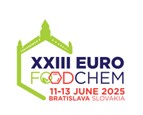Scientific journal
Journal of Food and Nutrition Research
Summary No. 2 / 2016
Šnebergrová, J. – Grégrová, A. – Šístková, I. – Čížková, H.
Determination of quality characteristics for whole milk powder with slight and moderate odour changes
Journal of Food and Nutrition Research, 55, 2016, No. 2, s. 181-188
Jitka Šnebergrová, Department of Food Preservation, Faculty of Food and Biochemical Technology, University of Chemistry and Technology, Prague, Technická 5,
Received 6 February 2016; 1st revised 27 March 2016; accepted 25 April 2016; published online 21 May 2016.
Summary: Whole milk powder is susceptible to flavour changes, which is limiting for its shelf-life as well as consumer acceptability. Degradation of natural aroma during production and storage occurs primarily as a result of lipid oxidation, Maillard reactions and the influence of extracellular microbial enzymes. Selected chemical parameters were measured in ten whole milk powder samples to assess their susceptibility to off-odour development. The results of off-odour intensity were correlated with the volatile compounds determined by headspace solid-phase microextraction (HS-SPME) coupled to gas chromatography-mass spectrometry (GC-MS) and with other physicochemical parameters (moisture, protein content, content of organic acids and their salts, peroxide value and content of free fat). The off-odour intensity correlated with contents of volatile compounds, lactic acid, proteins, propanoic acid, moisture and peroxide value. Based on the results, characteristics of a moderate off-odour intensity, which is still acceptable to consumers, were established to predict flavour changes with the following limit values: total content of volatiles with the sum of peak areas of max. 400 V·s, content of hexanal of max. 10 µg·kg-1, content of lactic acid of max. 1 g·kg-1, protein content of min.
Keywords: milk powder; odour changes; volatile components; sensory properties
Download:
(pdf, 323.8 Kb, 1296x)










